New products at Crocus
by Sarah - March 17th, 2010.Filed under: Crocus, New Products.
New products added today at Crocus
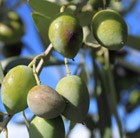
olive tree £34.99
Position: full sunSoil: deep, fertile, sharply drained soil (or loam-based potting compost for container-grown specimens)Rate of growth: slow-growing Flowering period: June to August Flower colour: creamy-whiteOther features: in hot summers the flowers are followed by edible, spherical, green fruitsHardiness: frost hardy (needs winter protection)Tiny, fragrant, creamy-white, summer flowers and grey-green leaves, retained all year. This elegant, evergreen tree makes an excellent specimen plant for a sunny, Mediterranean-style garden. In frost-prone areas it’s best grown in a large container under glass or planted at the base of a sunny, sheltered wall.Garden care: To protect against wind damage stake using a low angled stake, driven into the ground on the windward side at a 45° angle. Water regularly during dry periods, keeping the planting area weed-free. Apply a top-dressing of a nitrogen-rich general purpose fertiliser twice or three times each year during the growing season.
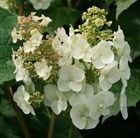
oak-leaved hydrangea £29.99
Position: full sun or partial shadeSoil: moist, well-drained, moderately fertile, humus-rich soilRate of growth: average Flowering period: July to SeptemberHardiness: fully hardyA fantastic hydrangea, with bright green leaves shaped like giant oak leaves and large cones of white flowers in late summer. In autumn, the leaves turn dramatic shades of coral, pink and red, and the flowers fade to pale pink, then brown. A fabulous shrub that gives its best for most of the year. It’s best in the middle of a partially shady border, and associates beautifully with most other hydrangeas. Garden care: Hydrangeas do not like to dry out. In dry weather, soak the roots with a hose and the plant will usually recover. Remove faded flowerheads in spring after the danger of frosts, cutting back the flowered stems to a strong pair of buds. Take out misplaced or diseased shoots. Mulch young plants with a well-rotted manure or compost in spring. Once established, remove a quarter to a third of the shoots to the base of the plant.
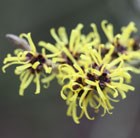
Chinese witch hazel £24.99
Position: full sun or partial shadeSoil: moderately-fertile, moist, well-drained neutral to acid soilRate of growth: slow-growing Flowering period: December to FebruaryHardiness: fully hardyIn winter, this upright, deciduous shrub has clusters of sweetly scented, bright yellow, spidery flowers clinging to bare twigs. In autumn, the bright green leaves turn soft yellow. A beautiful shrub for a woodland edge, or winter border or alongside a path, where its fragrance can be appreciated. The flowering twigs can be cut to perfume rooms in winter.Garden care: In early spring remove any misplaced, crossing or diseased branches and apply a generous 5-7cm (2-3in) mulch of well-rotted compost or manure around the base of the plant.
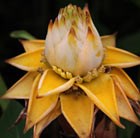
Chinese yellow banana £14.99
Position: full sun to partial shadeSoil: fertile, moist but well-drained soilRate of growth: averageFlowering period: July to SeptemberHardiness: frost hardy (needs winter protection)Thought to be extinct only a decade ago, this handsome banana was found growing in remote regions of the Himalayas in southwest China. This clump-forming banana has huge, paddle-like, bright green leaves and mature specimens will produce long-lasting yellow, summer flowers. As the flower develops, the original plant will start to die, but it will produce off shoots and will continue to thrive. Although a cold snap will brown the foliage, the plant will bounce back and continue to grow.Garden care: Though the root is fairly hardy the foliage does need to be protected with a mulch of fleece and straw in autumn.
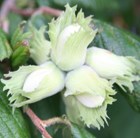
hazel nut £14.99
Position: full sunSoil: fertile, well-drained, preferably chalky soilRate of growth: averageFlowering period: February to MarchFlower colour: golden-yellow catkinsOther features: large hazel nutsHardiness: fully hardyA tree-like shrub that has elegant, golden-yellow catkins in late winter, followed by mid-green, heart-shaped leaves. The delicious, edible nuts that follow will ripen in mid-August. This variety needs a sunny garden for the large hazel nuts to ripen.Garden care: Prune dead, diseased and damaged wood in March and apply a 5-7cm (2-3in) mulch of well-rotted organic matter around the base of the plant. Suckers should be removed from the base of the plant as soon as they appear.
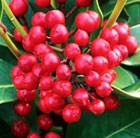
Japanese skimmia (female) £12.99
Position: partial to full shadeSoil: moderately fertile, moist but well-drained soilRate of growth: averageFlowering period: April to May Flower colour: whiteOther features: the flowers are followed by bright red berries as long as a male variety is planted close byHardiness: fully hardyA spreading, evergreen shrub with white flowers in April and May and slightly aromatic, lance-shaped, dark green leaves. This award-winning shrub provides much-needed colour in the winter garden. Ideal for a shady shrub or mixed border, the flowers are followed by long lasting, bright red berries as long as a male variety is planted close by.Garden care: Lightly trim after flowering, if necessary. Add plenty of well-rotted compost when planting as may become chlorotic if planted on poor, dry soils.
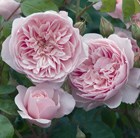
rose Wisley 2008 (shrub) £12.99
Position: full sun or partial shadeSoil: fertile, humus-rich, moist, well-drained soilRate of growth: averageFlowering period: July to SeptemberFlower colour: pinkOther features: excellent cut-flowersHardiness: fully hardyNamed for the RHS Gardens at Wisley, this is a recent introduction, which should not be confused with another rose named ‘Wisley’ that does not display such a strong resistance to disease. This is an outstanding rose, with shallowly cupped flowers that form beautifully shaped rosettes up to 7.5cm (3″) across. These soft pink flowers have a fruity fragrance, and will continue to appear for a long period throughout summer along the softly arching stems. Busy and upright, this is an ideal choice for either formal or informal areas of the garden.Garden care: Plant during a frost-free spell, incorporating well-rotted organic matter and a balanced fertiliser into the planting hole. Ensure that the ‘bud union’ (the bulge at the base of the shoots) is 2.5cm (1in) below the soil.
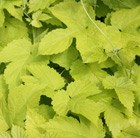
golden hop £9.99
Position: full sunSoil: fertile, well-drained, humus-rich soilRate of growth: vigorousFlowering period: SeptemberHardiness: fully hardyA gorgeous climber with large, deep-lobed, yellow-green leaves that turn bright golden yellow in autumn, when it is festooned with greenish-yellow, cone-like flowers that hang like grapes. Given space to express itself, this vigorous golden hop will romp along a strong rose arch or arbour. Garden care: Plant in fertile, well-drained soil in full sun, and tie in the twining shoots around the base of the support. Cut back to ground level in the spring and mulch with well-rotted manure or garden compost.
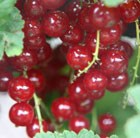
redcurrant £8.99
Position: full sun or partial shadeSoil: any well-drained soilRate of growth: averageOther features: large, well-flavoured berries (mid-July)Hardiness: fully hardyA delicious variety that has very large red fruits in July on long trusses which makes them easy to pick. Redcurrants are easy to grow shrubs, cropping well in sun or shade. Like gooseberries and blackcurrants, they develop a permanent framework of shoots so can be grown as fans, espaliers, cordons, standards, as well as bushes.Garden care: Prepare the ground well before planting. Remove all weeds and dig in plenty of well-rotted manure into the area. Space at 1.5m intervals and once planted, apply a mulch of well-rotted manure every spring, as well as a nitrogen and potassium fertiliser. Make sure the plant is watered in dry weather and net the bushes to protect the fruit from birds. In the first year, prune back to one bud above soil level in winter. After that only prune out weak branches.
lily-turf £7.99
red hot poker £6.99
white French lavender £6.99
bergamot £6.49
dusky cranesbill £5.99






